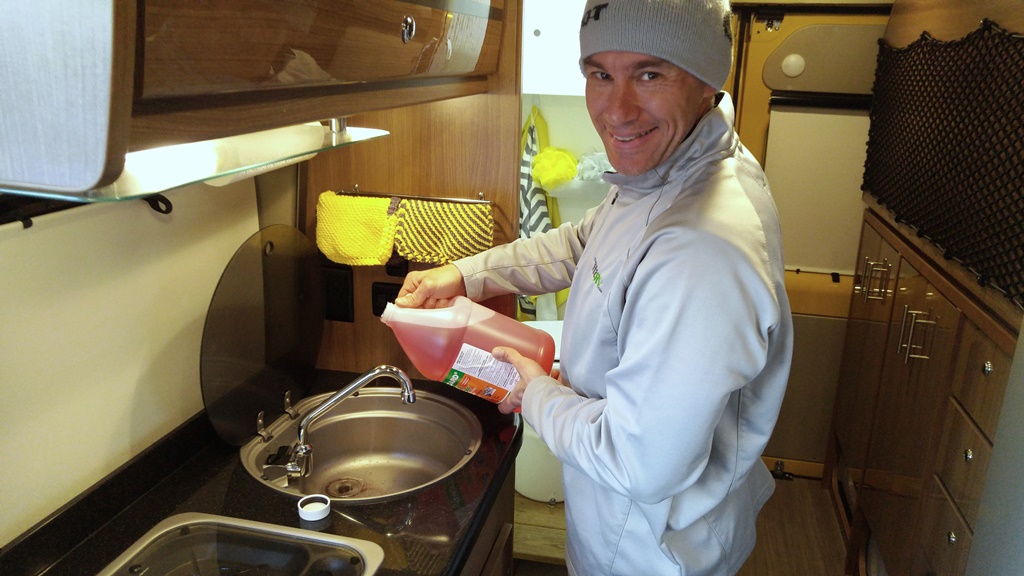
Winter RVing Tips Anyone Can Use
Stef has written here before about how we like to RV in the winter, and I'll tell you, she's right. I love it.
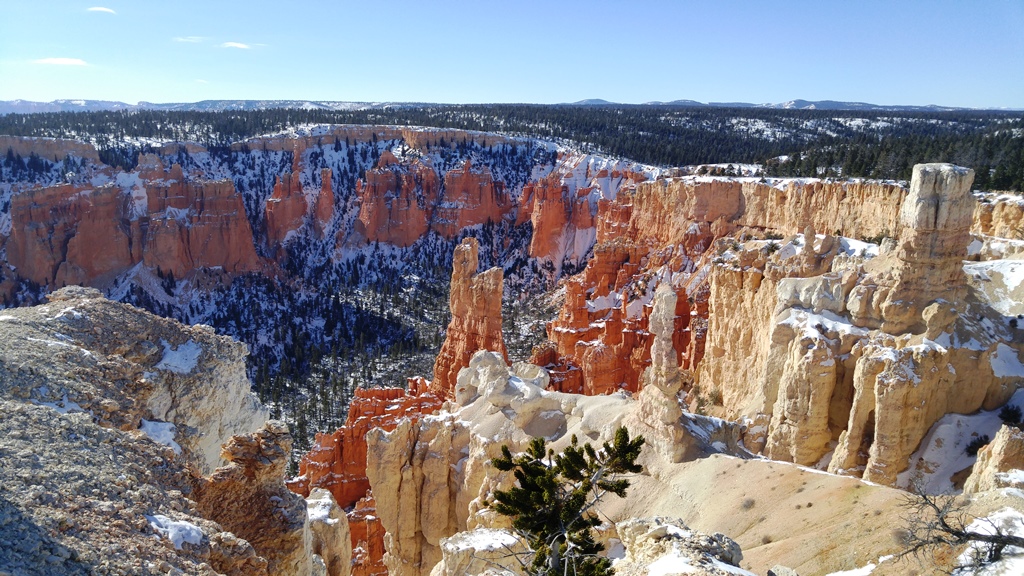 Bryce Canyon in snow is amazing -- and the only way to see it like this is in the winter.
Bryce Canyon in snow is amazing -- and the only way to see it like this is in the winter.
But any seasoned RVer will tell you there's more to successful winter RVing than just pointing your rig north. And it's true, from a "nuts and bolts" perspective, winter RVing presents some challenges.
I'm a bit of an over-achiever when it comes to wintertime RVing. I've modified our Winnebago Travato so that we're fully functional at -13 degrees. But you don't have to go to those kinds of extremes to enjoy RVing in the winter. In fact, with just a few simple tips, you can have fun in ANY RV in the winter.
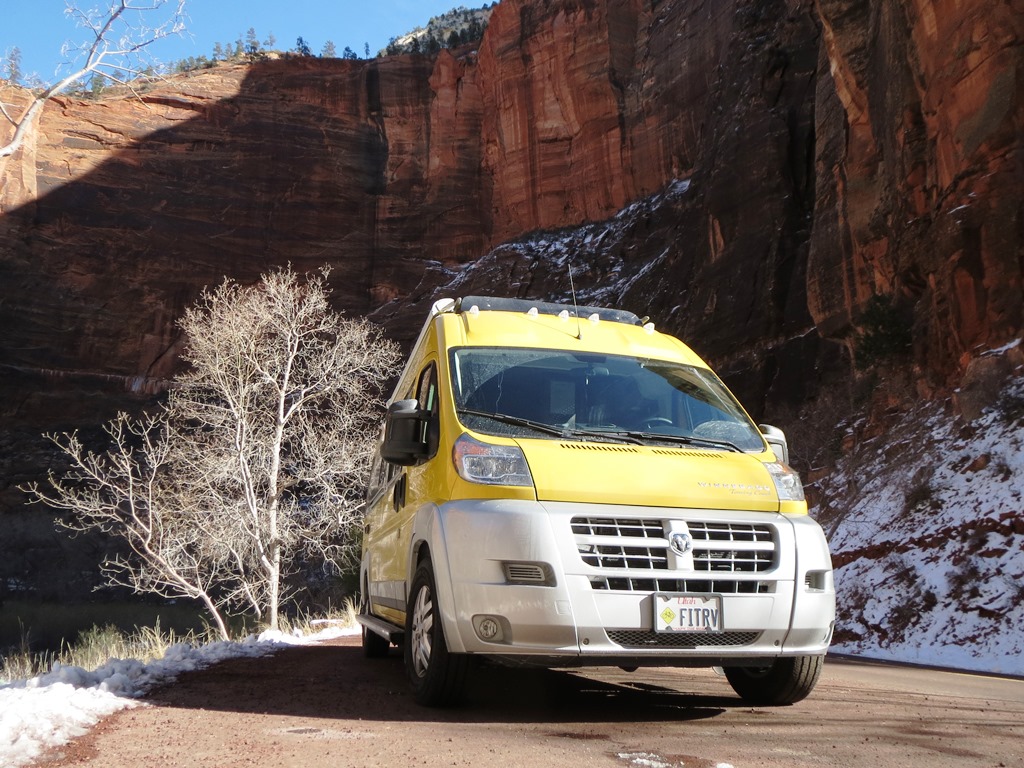 Zion National Park -- One of a thousand RV destinations that's better in the winter without the crowds.
Zion National Park -- One of a thousand RV destinations that's better in the winter without the crowds.
It's all about the water.
The big problem with winter RVing is water. It freezes. And frozen water in your RV plumbing is no better than frozen pipes in your "regular" home. The good news here is that all Winnebago come with instructions on how to "winterize" the water system. The procedures vary from coach to coach, but basically, winterizing is removing the water from your RVs plumbing and replacing it with either air (from a compressor), or RV antifreeze that you pump through.
If there's no water in the lines, it can't freeze. And once you've winterized it, you can use ANY COACH well below freezing. You just won't be using the water system. In practice, this isn't as big of a deal as it sounds. For drinking water and brushing your teeth, just bring along bottled water.
Similarly, you can bring along bottled water for hand and dishwashing. Another alternative to dishwashing is to use paper plates and disposable cutlery. But that's not the most environmentally friendly solution, which brings us to the next point.
It's still about the water -- even after you've used it.
There are two water systems in your RV: The fresh water system, which we've just discussed; and the waste water system, which can also freeze. So you need to pay attention to everyone's favorites, the grey and black tanks, to keep your winter RVing running smoothly.
Some Winnebago models have tank heaters. These are typically pads placed on the underside of the waste tanks, which heat the contents just enough to keep them liquid. If you have tank heaters, use them. That's easy enough if you've got hookups. But if you're boondocking, you'll need to know how much energy they use and manage that to avoid draining your battery bank. One strategy I use here is to only use the tank heaters while driving or when we're going to dump that day.
The other way to keep your waste water system flowing is to use RV antifreeze liberally. Flush the toilet with RV antifreeze instead of water. (You knew we had to discuss the toilet eventually...) Also, pour RV antifreeze down the drains when you're done washing up. This will do two things: it will get the antifreeze into the traps under your sinks, which will keep them from freezing; and it will also dilute the water in your grey tank with antifreeze, lowering its freezing point. The amount of RV antifreeze you'll want in your tanks will vary by tank size and outdoor temperature, so there's no one right number here. Fortunately, RV antifreeze is cheaper than many brands of bottled water. Oh -- and while you're pouring RV antifreeze down drains -- don't forget the shower!
Insulate to stay warm.
Your rig should be equipped with a heater that is adequately sized to keep you comfortable when the temperatures drop. But there's no sense in wasting energy or testing your heater harder than you need to. Just like in a house, insulation can do a lot to keep the heat in your motorhome, and the cold out.
Now obviously, adding more insulation to a motorhome is a difficult proposition once it's built. But there are a couple key areas you can pay attention to that will reap you some big benefits. And the most important of these are the windows.
I've taken infrared pictures of our rig in the cold, and from the pictures, it's obvious that most of the heat loss is coming from our windows.
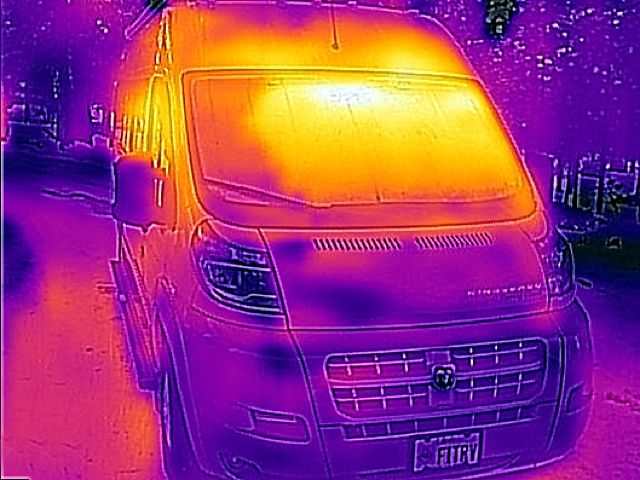 Orange = heat leaking out of our RV!
Orange = heat leaking out of our RV!
The same is going to hold true for most RVs. Single-pane glass is your enemy here, and this includes the automotive glass in the cab area. By far, the easiest way to save on your RV heating is to insulate your RV's windows.
Many RVers use a product that's basically tin foil covered bubble wrap, but I don't recommend it. The tiny air space in the bubble wrap doesn't count for much, and the tin foil is meant to reflect radiant heat. So unless you're heating your RV with a radiant heater, that product misses the mark.
A more effective solution would be to use some rigid board insulation from a home center and make custom-fit window covers. There are several types of rigid board insulation readily available. I would try to avoid the polystyrenes (XPS and EPS -- there's some concern about the fire retardant used in them), and instead look for polyisocyanurate (polyiso, for short). Polyiso has a very high R value per inch, and it cuts easily. Custom-fit foam window covers may not look great, and they require some storage space when underway, but remember: you're only using them in the winter.
Another quick insulation win is to insulate your RV's vent openings. We all have them. They're right on the ceiling where all your warm air migrates, and they typically just have a thin plastic cover on them. Insulating these openings can bring dividends in staying warm. Since the vents are a standard size, there are several commercial products available for you to choose from.
Your rig has a heater -- use it.
As mentioned before, your RV should have a furnace capable of keeping the living space comfortable when the mercury drops. You just need to be ready to use it. This means a few things:
- Inspect your RV's furnace regularly to make sure it is safe for use (if you don't know how, have it done at a reputable service facility).
- Make sure you've got adequate fuel and battery power to run it. Battery power will likely be the limiting factor in how long you can stay out in the winter without hookups.
- Keep vents clear, and make sure your carbon monoxide, smoke, and propane detectors are working properly.
We use our RV's furnace exclusively for winter camping. I have never found the need to supplement it with anything else. One thing you'll hear a large number of RVers recommend is to use "catalytic heaters". I don't recommend using any sort of fuel-burning heating appliance inside the confines of your Winnebago. While proponents of these heaters will tell you that they are safe, there are two indisputable facts about them that remove them from consideration in my book:
- They do produce some carbon monoxide.
- They use up the oxygen in the space they operate in.
If you feel you need some supplemental heat, I would recommend an electric ceramic heater. Obviously, these are only going to be useful when you have hookups or can run a generator, but they're a much safer option in my opinion.
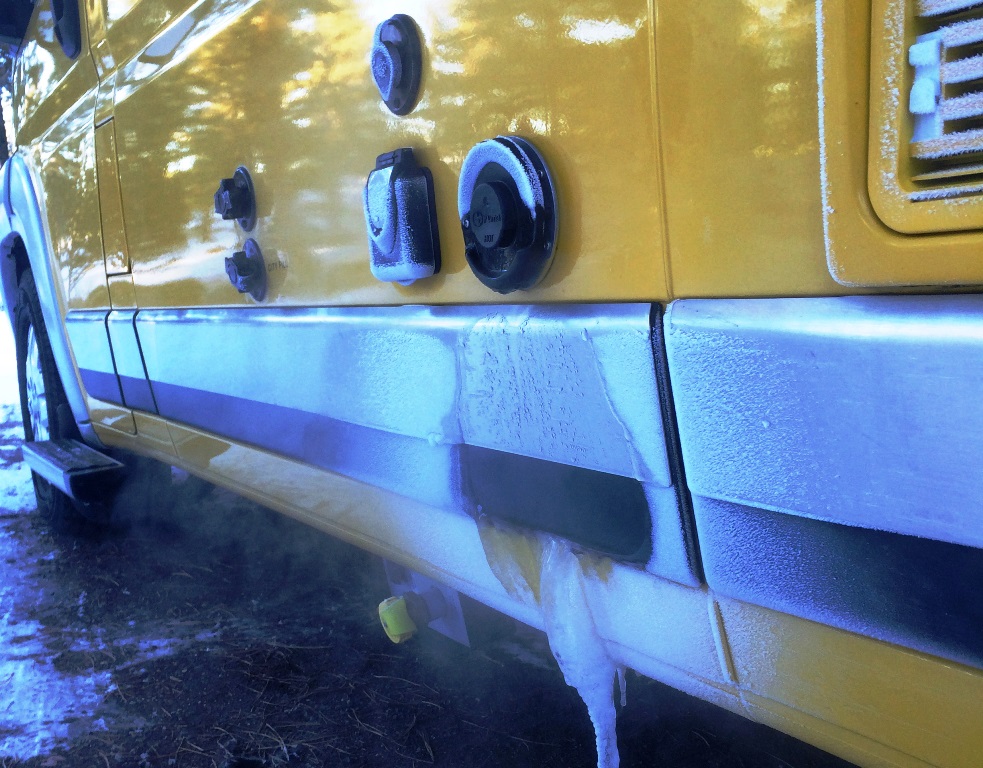 Our Winnebago Travato has a condensing furnace -- so when it gets really cold, we get icicles!
Our Winnebago Travato has a condensing furnace -- so when it gets really cold, we get icicles!
Keep tabs on your energy usage.
Here, I'm talking about getting a handle on how much and what types of energy you're going to use. Seasoned RVers usually have this down, but even they would do well to rethink their energy usage in cold weather. Here are some things to think about:
- In the winter months, the availability of solar energy is reduced. The sun is lower in the sky, and the days are shorter. Plan on recovering less energy with an RV solar power system in the winter.
- Whether your rig's furnace runs on propane or diesel, you're obviously going to use more fuel the colder it is outside. Plan ahead and know how much you might use to make sure you don't get a rude (and cold) awakening in your RV.
- Electrical energy from hookups is pretty constant, but battery power is a variable in the cold. For starters, batteries have less capacity in colder weather. They charge more slowly in the cold as well. And in the worst of all possible cases -- an uncharged lead-acid battery can actually freeze!
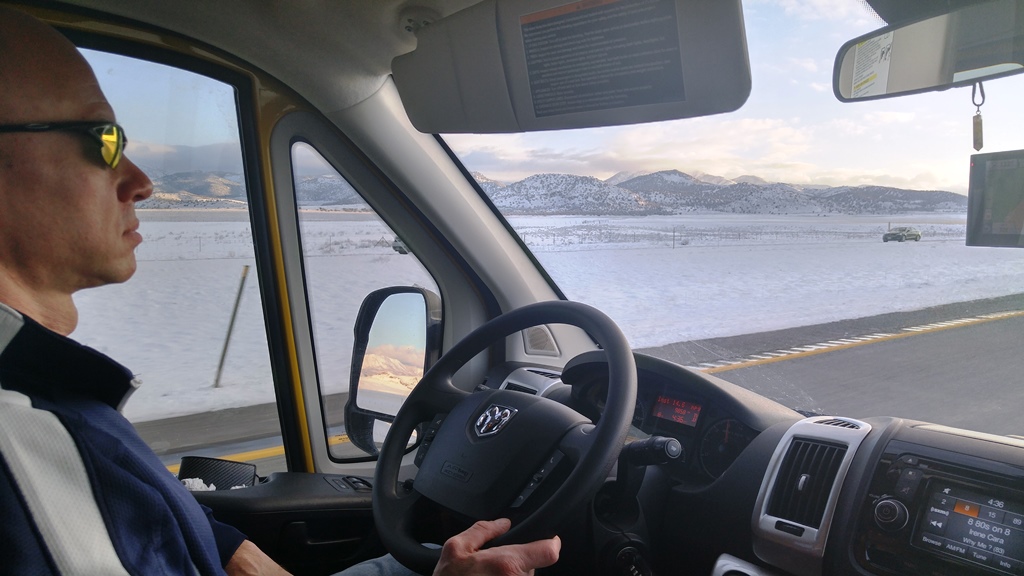 Yours truly -- off to our next winter RV destination.
Yours truly -- off to our next winter RV destination.
So there you have it. A few simple tips, and all the crowd-free pleasures of winter-time RVing are yours for the taking, regardless of what rig you have. Who knows, we may even see you out on the open (and cold) road this winter!
James
Comments
Comments on this post are moderated, so they will not appear instantly. All relevant questions and helpful notes are welcome! If you have a service inquiry or question related to your RV, please reach out to the customer care team directly using the phone numbers or contact form on this page .
